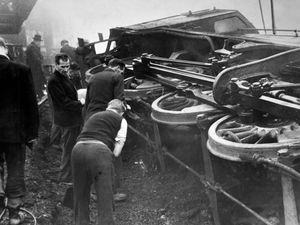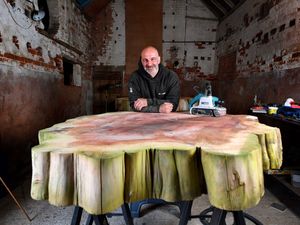How the beautiful Molineux gardens are now home to the beautiful game
The name Molineux has been intertwined with that of Wolverhampton for 300 years.
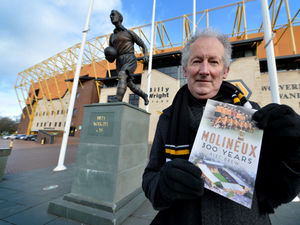
Today football fans throughout the globe know it as the home of Wolves – but that's only the most recent chapter in its long and colourful history.
Built in 1720 by ironmaster John Rotton, Molineux started life as one of the finest private homes in the town.
Alec Brew, who has researched the site's past for his new book Molineux 300 years, said it was a house and grounds to be proud of.
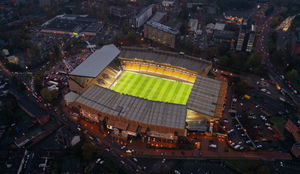
He said: "It was built at the top of the hill facing St Peter's Church with a lake and eight acres of formal gardens at the back.
"The views would have been stunning as you would have been able to see three counties and there would have been virtually no houses at that time. It would have been idyllic," says
When Mr Rotton died in 1743, his widow and business partner were forced to hand over the house to ironmaster John Molineux to settle a hefty debt of £700.
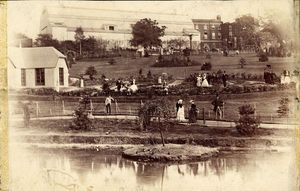
"Thankfully the name Rotton did not stick to the house because in 1743 it passed to the Molineux family to settle a debt and it remained one of the finest private houses in the town for the next 130 years, owned by several generations of the Molineux family.
"With terraced housing pressing on all sides, and the smoky chimneys of Whitmore Reans filling the panorama to the rear, it was then sold to become a hotel and pleasure gardens," said Mr Brew, who is curator at Tettenhall Transport Heritage Centre.
The gardens were open to the public who paid twopence to visit, were also used to host industrial exhibitions, such as the 1869 Exhibition of Staffordshire Arts and Industry and sporting events, including boxing, cricket, football and cycle racing.
"Cycle racing was a big business in Wolverhampton because there were around 30 bicycle makers in the town at the time. Up to 15,000 people would watch an event and the cyclists used to race around the ornamental lake," said Mr Brew.
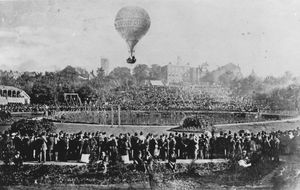
In 1869, the Exhibition of Staffordshire Arts and Industry was held in its grounds. But in the early 1880s the popularity of the gardens as visitor attraction began to wane following the opening of West Park. Nobody was going to the pleasure gardens when they could go to the park for free," explained Mr Brew.
In 1886 the site had its first resident football club – but it wasn't the side that people might expect.
"That club was not Wolves but Stafford Roaders, the team of the GWR Stafford Road Locomotive Works," said Mr Brew.
"Based in Fox's Lane, they used Molineux for the 1886-7 season. By then Wolverhampton Wanderers had finally eclipsed their great rivals, the Roaders, as the premier team in the town, and joined the Football League in 1888.
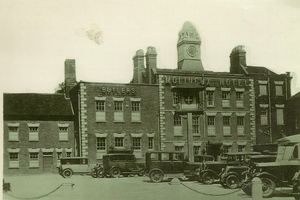
"Needing to move from their Dudley Road ground they secured the use of the Molineux from Northampton Brewery who had by then bought the Hotel, and were not interested in the gardens, and in 1889 began the process of turning it into a dedicated football stadium.
"This process lasted until 1936 when the stadium had become one of the finest in the country with a record 61,315 spectators watching a fifth round FA Cup tie against Liverpool," explained the 72-year-old.
The 1950s saw floodlights installed around the stadium and mid-week floodlit matches against the best European teams helped inspire the creation of the European Cup, in which Wolves were early participants.
But as many Wolves fans know the glory days were followed by a period of decline in 1980s, which saw both the hotel and stadium suffer.
"The hotel, cut off from the town centre by the ring road, was closed and became derelict, and the stadium had two sides condemned as the team plummeted into the 4th division," said Mr Brew, who lives in Claregate.
There was a brighter future ahead, however, when in 1990 Sir Jack Hayward bought Wolves and quickly began transforming its fortunes.
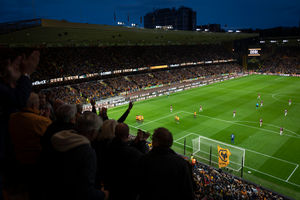
But the hotel's fate wasn't so straight forward. After it closed the building fell into disrepair and repeated attempts to find private investment to restore the hotel to its former glory have proved unsuccessful.
Then disaster struck in June, 2003, when an arson attack reduced the 18th century building to a shell.
Its owner at the time submitted an application to have the former mansion demolished, saying it was now unsafe.
But the city council managed to get a stay of execution and with the help of the funds from English Heritage, the Heritage Lottery Fund, Advantage West Midlands and others began restoring the building.
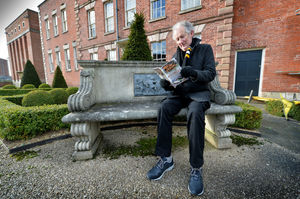
It now houses the City Archives and some of the original features including the wood panelled Oak Room and ornate Rococo Room, have been returned to their Georgian glory.
"The club was saved by Sir Jack Hayward, and Molineux House by the Council who turned it into the City Archives, and now Nuno Espirito Santo has brought back European football, and the name Molineux is heard across the world again," said Mr Brew.
His book, titled Molineux 300 Years, chronicles all of the ups and downs of house and stadium.
"I've been writing books about Wolverhampton for 20 years and I'm a lifelong Wolves supporter, I first went to a match as a babe in arms, so it's been a labour of love for me," said Mr Brew.
Molineux 300 Years is available from the Tettenhall Transport Heritage Centre shop, Waterstones and Amazon.


